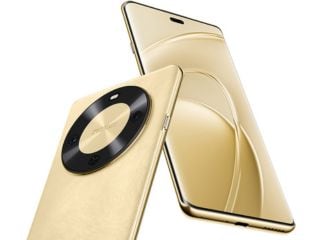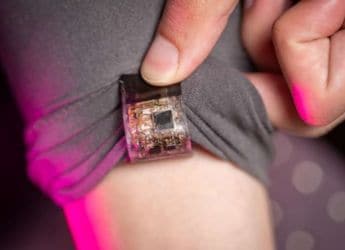- Home
- Science
- Science News
- US X 37B Space Plane to Test Quantum Navigation System That Could Replace GPS
US X-37B Space Plane to Test Quantum Navigation System That Could Replace GPS
US X-37B to test a quantum navigation system, offering independence from GPS signals.

Photo Credit: Veloz Alexander, US Space Force
X-37B space plane to trial quantum navigation as a future alternative to GPS
On August 21, 2025, a U.S. military space plane, the X-37B Orbital Test Vehicle, is scheduled to launch its eighth mission. Though a few additional things are still classified, one experiment in particular has captured the imagination: a quantum inertial sensor meant to serve as a major new alternative to GPS. This would revolutionise navigation in areas where satellite-based systems are not available or have been degraded. Whether in deep outer space, under the sea, or in hotspots on land, there is an eagerly awaited answer for vulnerabilities in global positioning systems.
X-37B Space Plane to Pioneer Quantum Navigation as GPS Alternative in Space
According to reports, satellite GPS powers everything from civilian smartphones to commercial aviation, but it has critical weaknesses. Signals degrade in space, can't get through water, and are subject to jamming and spoofing in contested environments. Researchers said the X-37B's quantum inertial sensor relies on atom interferometry, where ultracold atoms behave like waves. By measuring interference patterns caused by motion, the sensor provides navigation with exceptional accuracy, without depending on external signals.
Traditional inertial navigation systems, though useful, accumulate small errors over time, drifting from their true position without GPS correction. Quantum sensors, by contrast, use identical atoms immune to mechanical bias, offering orders of magnitude greater stability. Earlier missions, including NASA's Cold Atom Laboratory and Germany's MAIUS-1, have performed atom interferometry in orbit, but this flight is the first attempt to do it directly for long-duration navigation.
Some experts suggest that GPS-free navigation would make the military more resilient and facilitate autonomous navigation on space-exploration missions. The principle is also being offered for submarines and aircraft. And in 2024, Boeing and AOSense demonstrated embedding it onboard aircraft for GPS-free navigation, while the UK had its first quantum navigation test-flight.
The X-37B has the potential to revolutionise quantum technology, making space navigation not just a laboratory physics experiment but something practical for the man on the street – even if such developments are now likely to have military applications, analysts mentioned.
Get your daily dose of tech news, reviews, and insights, in under 80 characters on Gadgets 360 Turbo. Connect with fellow tech lovers on our Forum. Follow us on X, Facebook, WhatsApp, Threads and Google News for instant updates. Catch all the action on our YouTube channel.
Related Stories
- Samsung Galaxy Unpacked 2025
- ChatGPT
- Redmi Note 14 Pro+
- iPhone 16
- Apple Vision Pro
- Oneplus 12
- OnePlus Nord CE 3 Lite 5G
- iPhone 13
- Xiaomi 14 Pro
- Oppo Find N3
- Tecno Spark Go (2023)
- Realme V30
- Best Phones Under 25000
- Samsung Galaxy S24 Series
- Cryptocurrency
- iQoo 12
- Samsung Galaxy S24 Ultra
- Giottus
- Samsung Galaxy Z Flip 5
- Apple 'Scary Fast'
- Housefull 5
- GoPro Hero 12 Black Review
- Invincible Season 2
- JioGlass
- HD Ready TV
- Laptop Under 50000
- Smartwatch Under 10000
- Latest Mobile Phones
- Compare Phones
- Lava Agni 4
- Wobble One
- OPPO Reno 15 Pro
- OPPO Reno 15
- Vivo Y500 Pro
- Realme GT 8 Pro Aston Martin F1 Limited Edition
- Huawei Mate 70 Air
- Moto G57
- Asus ProArt P16
- MacBook Pro 14-inch (M5, 2025)
- iQOO Pad 5e
- OPPO Pad 5
- Fastrack Revoltt FR2 Pro
- Fastrack Super
- Acerpure Nitro Z Series 100-inch QLED TV
- Samsung 43 Inch LED Ultra HD (4K) Smart TV (UA43UE81AFULXL)
- Asus ROG Ally
- Nintendo Switch Lite
- Haier 1.6 Ton 5 Star Inverter Split AC (HSU19G-MZAID5BN-INV)
- Haier 1.6 Ton 5 Star Inverter Split AC (HSU19G-MZAIM5BN-INV)
-
 Huawei Enjoy 70X Premium Edition Announced with Kirin 8000 SoC, Curved AMOLED Display: Price, Specifications
Huawei Enjoy 70X Premium Edition Announced with Kirin 8000 SoC, Curved AMOLED Display: Price, Specifications
-
 UC San Diego Engineers Create Wearable Patch That Controls Robots Even in Chaotic Motion
UC San Diego Engineers Create Wearable Patch That Controls Robots Even in Chaotic Motion
-
 Gevi Now Streaming on SunNXT: Know Everything About This Tamil Social Drama Film
Gevi Now Streaming on SunNXT: Know Everything About This Tamil Social Drama Film
-
 Harish Kalyan’s Diesel Now Streaming on Aha Tamil: What You Need to Know
Harish Kalyan’s Diesel Now Streaming on Aha Tamil: What You Need to Know












